[ad_1]
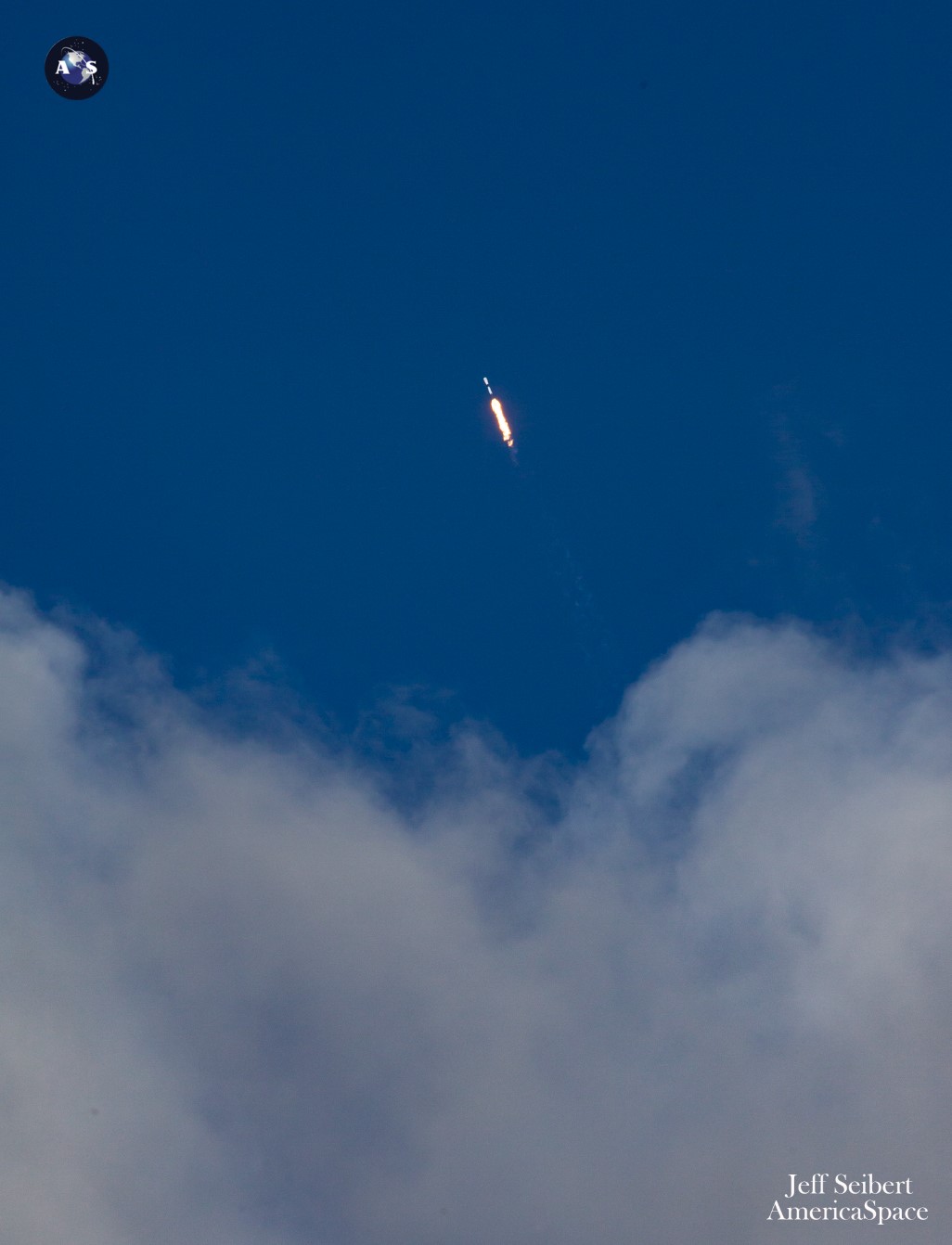
SpaceX has efficiently launched its first mission to the Moon, following Thursday night’s 7:08 p.m. EDT liftoff of a Falcon 9 from storied Area Launch Complicated (SLC)-40 at Cape Canaveral Area Power Station, Fla. Aboard the 230-foot-tall (70-meter) rocket—a seasoned booster which had already logged 5 prior launches, together with two outings in 2019 as a Falcon Heavy side-booster—was the Korea Pathfinder Lunar Orbiter (KPLO), South Korea’s inaugural voyage to the Moon. Also called “Danuri”, a portmanteau of two Korean phrases for “Moon” and “take pleasure in”, KPLO’s six scientific devices will spend as much as a full 12 months surveying lunar sources and compiling topographical maps in assist of the identification of future touchdown websites.
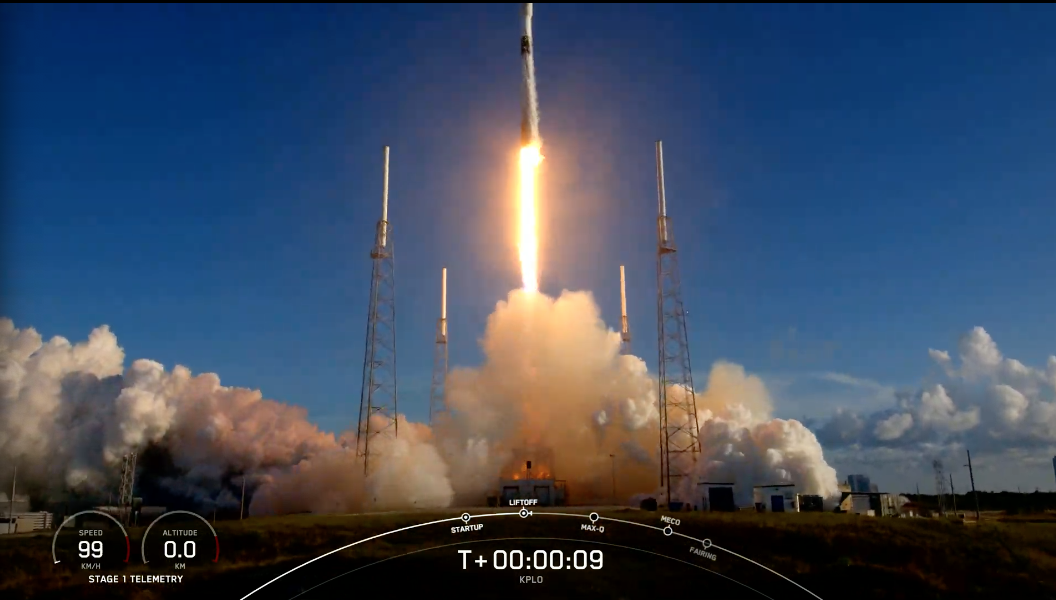
Thursday’s launch was the second SpaceX flight on behalf of South Korea, following the October 2017 mission of the 7,700-pound (3,500-kilogram) KoreaSat-5A geostationary communications satellite tv for pc. Nevertheless it additionally marked the Hawthorne, Calif.-headquartered group’s first flight to lunar distance, kicking off a listing of missions over the following few years to ship orbiters and landers on behalf of the US, Japan and the United Arab Emirates (UAE), together with the Energy and Propulsion Module (PPE) and Habitation and Logistics Outpost (HALO) for the Moon-circling Gateway.
KPLO was initially scheduled to fly in December 2020 however fell foul to intensive delays following its 2017 Preliminary Design Overview (PDR). The spacecraft grew quickly past its mandated 1,200-pound (550-kilogram) weight margin, finally maxing-out at almost 1,500 kilos (680 kilograms). In September 2019, it was introduced that KPLO’s launch would correspondingly slip by a minimum of 18 months to No Earlier Than (NET) July 2022 for essential modifications to the mission design.
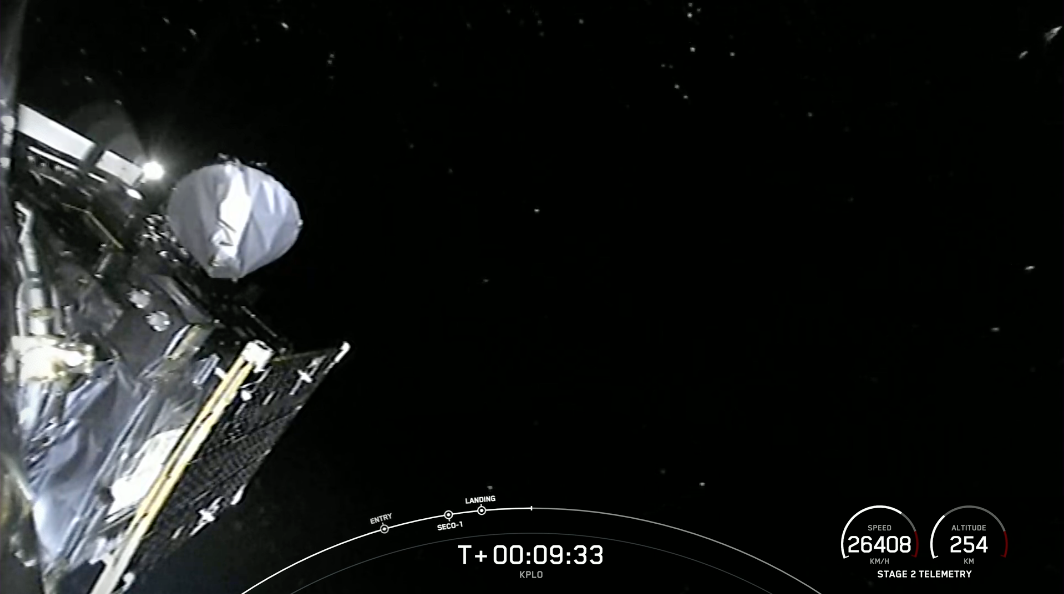
The spacecraft lastly arrived at Cape Canaveral Area Power Station early final month, the place it was put by means of a remaining processing regime, together with fueling, forward of encapsulation in its bullet-like Falcon 9 payload fairing. SpaceX was chosen again in December 2017 to launch this mission, reportedly beating Antrix, the business arm of the Indian Area Analysis Group (ISRO).
Simply final week, SpaceX introduced an extra couple of days of delay from the start of August to no before the night of the 4th for extra checks of the Falcon 9 booster. And the automobile supporting tonight’s flight was B1052, which entered service again in April 2019 as a side-booster for the primary “operational” Falcon Heavy mission, which lofted Saudi Arabia’s heavyweight Arabsat-6A communications satellite tv for pc.
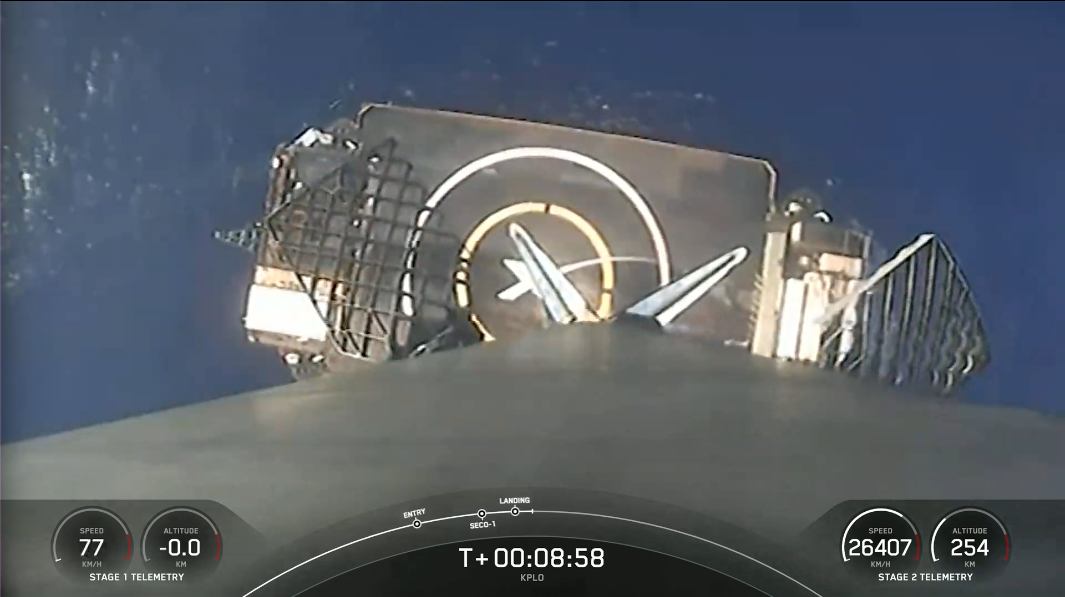
Two months later, in June 2019, it flew once more on the Heavy’s first launch within the dead nights, to raise the extremely complicated Area Take a look at Program (STP)-2 mission. This comprised a smorgasbord of 24 payloads on behalf of U.S. Authorities, navy and civilian clients into a number of totally different orbital areas.
Having easily wrapped up her first two flights with on-point touchdowns on the Cape Canaveral touchdown pad, B1052 was reconfigured from a Falcon Heavy side-booster right into a “single-stick” Falcon 9. This metamorphosis noticed her launch once more in February 2022 to ship the second member of a four-strong fleet of COSMO-SkyMed Second Technology (CSG-2) Earth-imaging satellites for the Italian Area Company (ASI).

Within the days previous to her CSG-2 launch, B1052 was put by means of a Static Hearth Take a look at, cementing her new-found credentials as a single-stick Falcon 9. Two additional flights adopted in fast succession, as B1052 boosted a complete of 101 Starlink web communications satellites into low-Earth orbit in March and Might.
Each missions terminated with landings on the deck of SpaceX’s Autonomous Spaceport Drone Ship (ASDS). So too did tonight’s launch of KPLO. The ASDS “Simply Learn the Directions”, put to sea out of Port Canaveral final Sunday, certain for a place about 400 miles (640 kilometers) offshore within the Atlantic Ocean.
Following the profitable landing of B1052 on the deck of JRTI, about 9 minutes after launch, the Merlin 1D+ Vacuum engine of the Falcon 9’s second stage accomplished a easy burn to ship KPLO on step one of its voyage to lunar distance. At 40 minutes after launch, the spacecraft separated from the booster.
With the launch safely concluded, South Korea’s first voyage to the Moon is formally underway. Managed by the Korea Aerospace Analysis Institute (KARI), the cube-shaped KPLO spacecraft will attain lunar orbit in mid-December after a journey time of round 4.5 months. The mission will undertake a Ballistic Lunar Switch (BLT) trajectory, which minimizes vitality necessities and doubtlessly saves as much as 25 % of propellant expenditure.
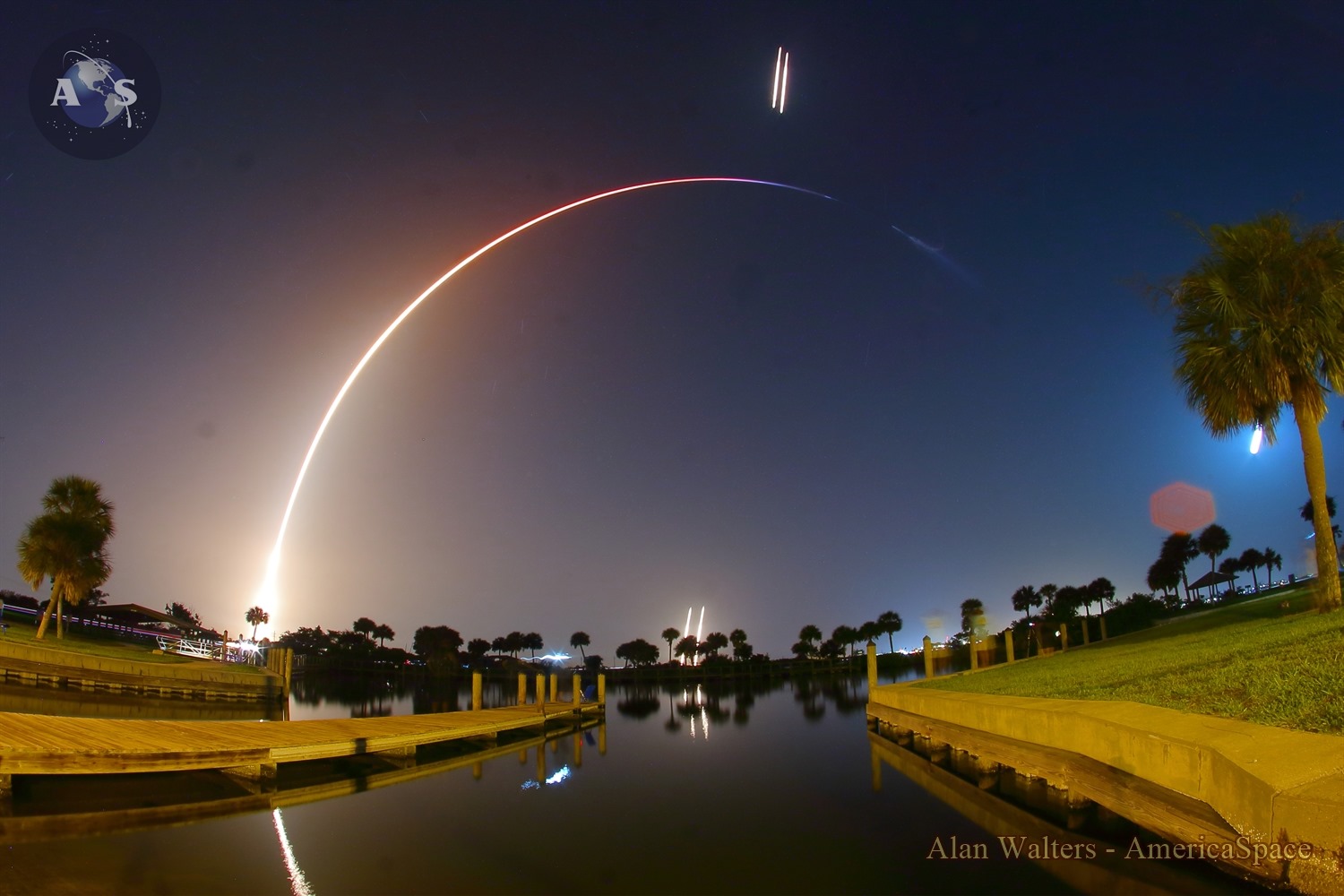
After being captured into an elliptical lunar orbit, KPLO will circularize its orbital parameters to a nominal polar orbit at an altitude of 62 miles (100 kilometers) for a couple of 12 months of scientific observations. If the mission is accepted for an “prolonged” section of operations, it is going to descend to an altitude beneath 43 miles (70 kilometers).
Six scientific devices, weighing about 88 kilos (40 kilograms), are aboard KPLO. 5 of them have been offered by KARI. The Lunar Terrain Imager (LUTI) will study potential touchdown websites for future missions at spatial resolutions of lower than 16 ft (5 meters), while the Extensive-Angle Polarimetric Digicam (PolCam) will examine all the lunar floor, save for the poles.
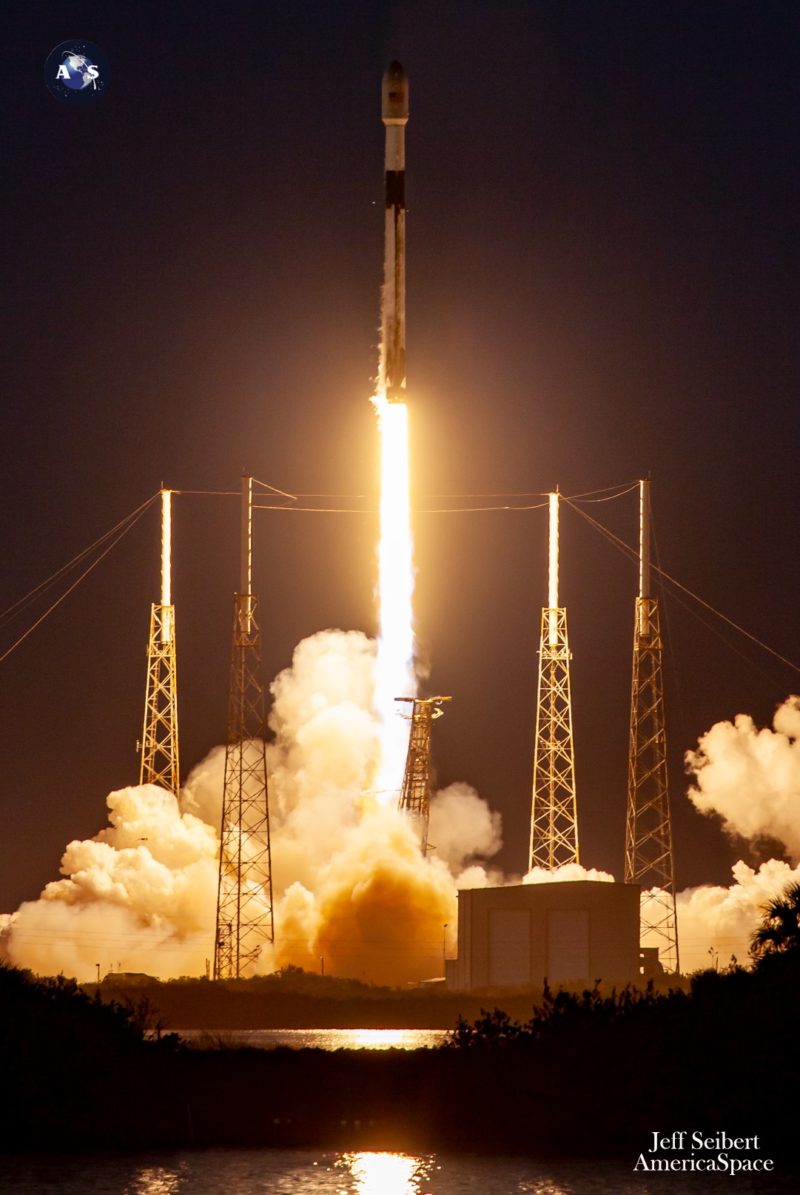
Extremely delicate sensors aboard the KPLO Magnetometer (KMAG) will measure the magnetic energy of the lunar surroundings. And the KPLO Gamma Ray Spectrometer (PGRS) will examine lunar sources, together with ices, uncommon components and minerals, in addition to mapping their respective spatial distribution.
The Disruption Tolerant Community experiment (DTNPL) seeks to exhibit space-based communications utilizing Disruption Tolerant Community (DTN) applied sciences, while NASA’s extremely delicate ShadowCam will purchase high-resolution optical imagery of the Completely Shadowed Areas (PSRs) of the lunar poles, thought to comprise huge ice deposits. ShadowCam will map the reflectance qualities of those PSRs every month to discern seasonal modifications and study the terrain inside craters, together with the distribution of boulders.
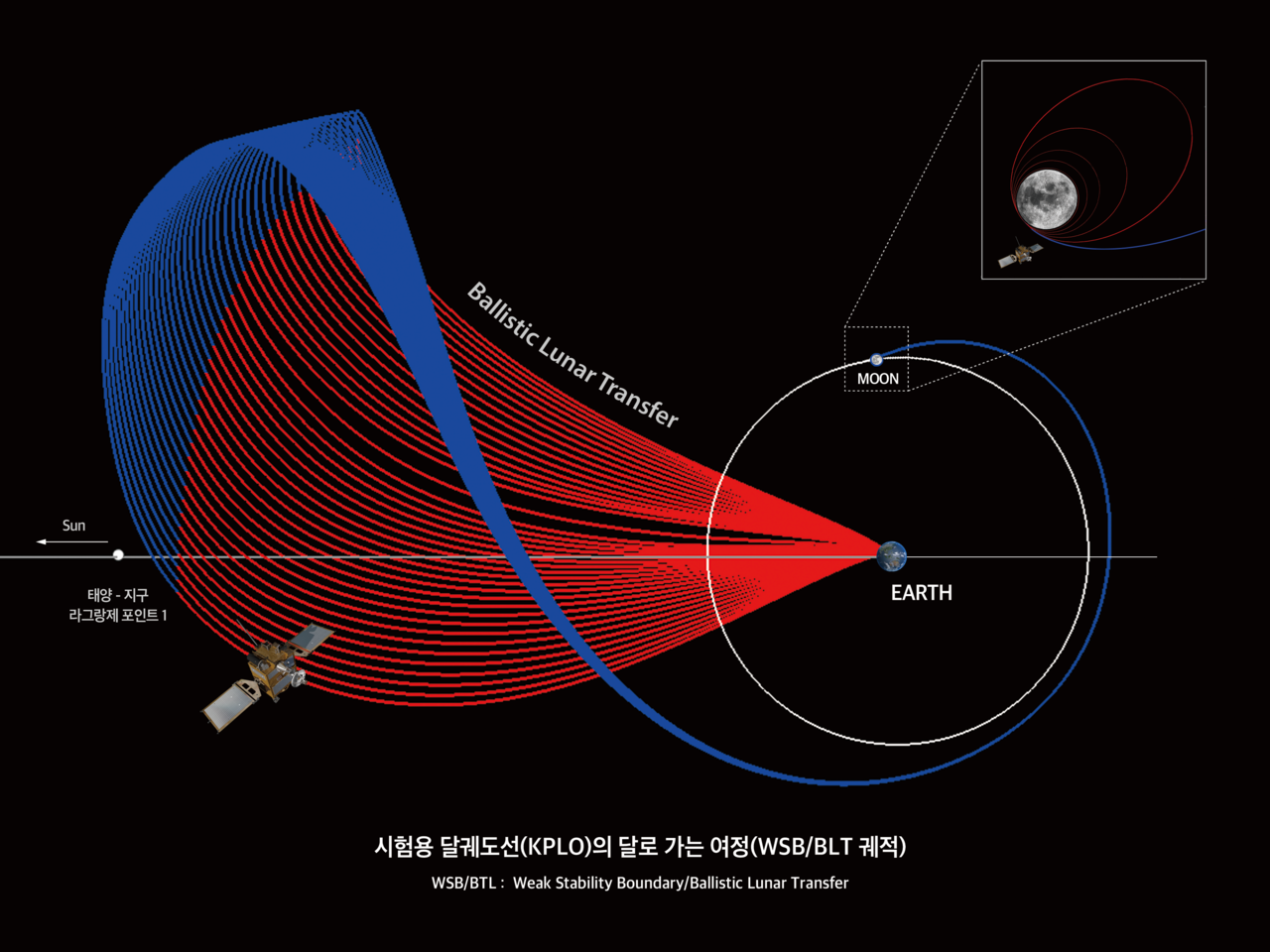
In March of final 12 months, 9 scientists from the Area Science Institute in Boulder, Colo., the College of California at Santa Cruz, the College of Hawaii at Honolulu, the Johns Hopkins Utilized Physics Laboratory (JHU/APL) in Laurel, Md., the College of California at Los Angeles, the Planetary Science Institute in Tucson, Ariz., and NASA’s Marshall Area Flight Heart (MSFC) in Huntsville, Ala., have been chosen to take part within the KPLO mission. Their analysis emphases vary from using multispectral polarimetric information to differentiate and characterize suspected lunar pyroclastic deposits to examinations of the Moon’s magnetic area and from mineralogical prospecting to the modeling of lunar-ice deposits.
Tonight’s launch marks the primary of a number of SpaceX missions to the Moon within the coming months. As early as November, one other Falcon 9 will raise Japan’s Hakuto-R lunar lander—developed by Tokyo-based ispace, Inc.—and the UAE’s tiny Rashid rover, certain for a landing on the basalt-rich plain of Lacus Somniorum, the “Lake of Goals”.
Weighing a mere 22 kilos (10 kilograms), Rashid carries a pair of high-resolution cameras, a microscopic digital camera to picture small floor particulars and a thermal imaging digital camera, along with a Langmuir probe to look at the Moon’s plasma composition and the composition of lunar mud. And measuring solely 21 inches (53 centimeters) lengthy, Rashid guarantees to be the smallest lunar rover ever deposited on the Moon.
Three Nova-3 landers, constructed by Intuitive Machines, will comply with between 2022 and 2024, with the primary (IM-1) set to fly a Falcon 9 in December. The Houston, Texas-based Intuitive Machines was initially chosen by NASA in November 2018 as certainly one of 9 U.S. corporations for the company’s Business Lunar Payload Companies (CLPS) program.
In January 2020, NASA chosen 5 experiments to fly on IM-1. A Laser Retroreflector Array (LRA), offered by the company’s Goddard Area Flight Heart (GSFC) in Greenbelt, Md., will deploy round eight small retroreflectors to exactly decide IM-1’s place on the lunar floor.
The Langley Analysis Heart (LaRC) of Hampton, Va., can have its Navigation Doppler Lidar for Exact Velocity and Vary Sensing (NDL) aboard IM-1 to execute extremely correct velocity and vary sensing in the course of the lander’s descent to the floor. And the CubeSat-sized Lunar Node-1 Navigation Demonstrator (LN)-1 from NASA’s Marshall Area Flight Heart (MSFC) of Huntsville, Ala., will exhibit autonomous navigation applied sciences.
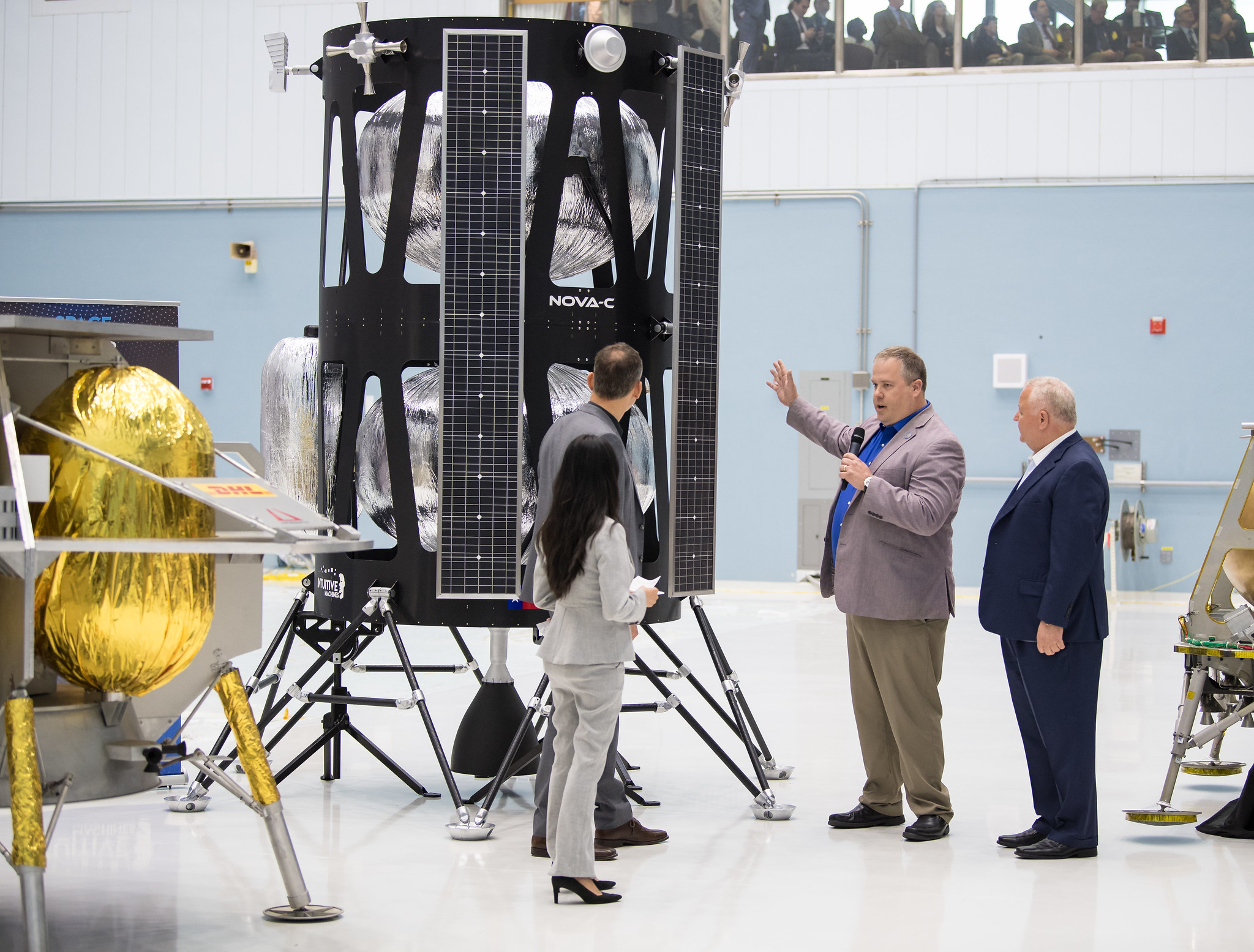
Rounding out the IM-1 payload can be Langley’s Stereo Cameras for Lunar Plume-Floor Research (SCALPSS), which seeks to seize video and nonetheless imaging of the impingement of the lander’s exhaust plume on the floor. Lastly, NASA-Goddard’s Low-frequency Radio Observations for the Close to Aspect Lunar Floor (ROLSES) will examine photoelectron sheath densities as a part of efforts to judge the effectiveness of a future radio observatory on the floor of the Moon.
Looking forward to 2023, one other Falcon 9 will ship the IM-2 lander to the Moon. The touchdown web site for this mission, which was chosen final fall, is the Shackleton Connecting Ridge, not removed from Shackleton Crater on the lunar south pole.
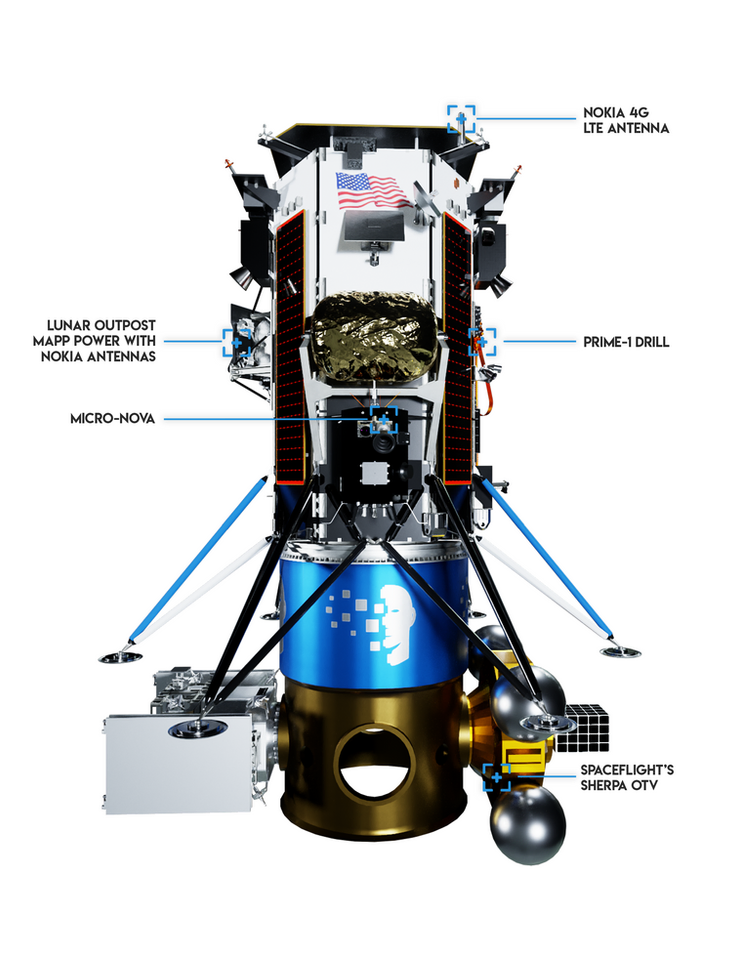
One notable payload aboard IM-2 is the NASA-financed Polar Sources Ice-Mining Experiment (PRIME), which is able to make use of a drill and mass spectrometer to scout for the presence of ice slightly below the floor. Moreover, IM-2 will take a look at Intuitive Machines’ MicroNova deployable “hopper” and consider a 4G/LTE communications community.
Late final 12 months, Intuitive Machines was chosen by NASA to ship its IM-3 payload to the Moon, with launch anticipated aboard a Falcon 9 rocket in 2024. Payloads aboard the Nova-C will search to analyze the lunar magnetic area, plasma surroundings and properties of the floor regolith, in addition to cell robots to map the terrain in three dimensions.
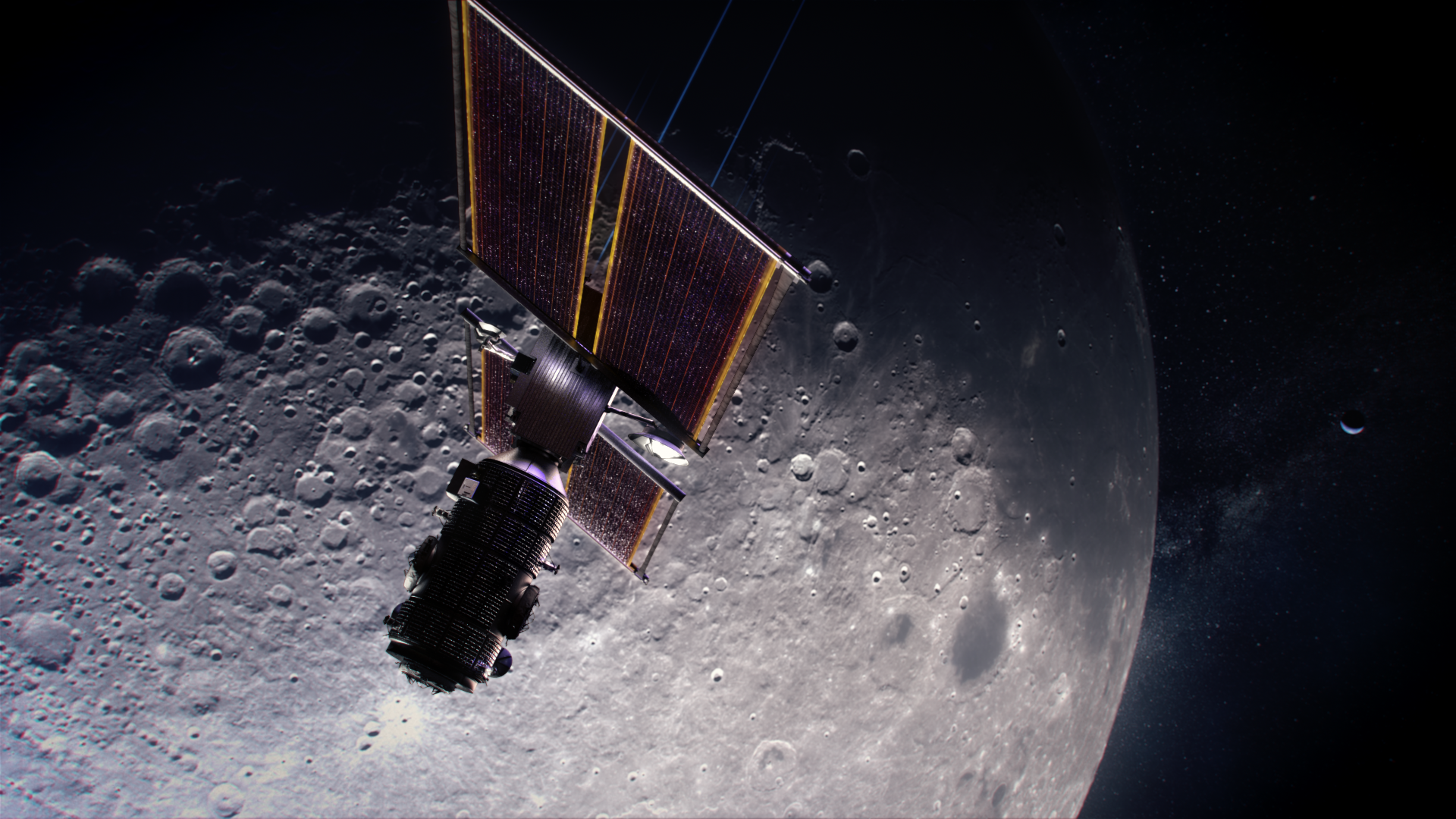
A laser retroreflector, known as MoonLIGHT, can even trip IM-3 and its information will assist investigations of relativity, the gravitational dynamics of the Earth-Moon system and the deep lunar inside. And a South Korean payload will study the near-surface surroundings because the Moon passes out and in of Earth’s extremely charged “magnetotail”.
And no before November 2024, a Falcon Heavy booster will raise the mixed Energy and Propulsion Aspect (PPE) and Habitation and Logistics Outpost (HALO) to the Moon. This main part of the lunar-circling Gateway can be emplaced in a seven-day Close to-Rectilinear Halo Orbit (NRHO), sweeping previous the lunar north pole as carefully as 1,900 miles (3,000 kilometers) at “perilune” and so far as 43,000 miles (70,000 kilometers) over the lunar south pole at “apolune”. Contracts price $331.8 million have been signed by NASA and SpaceX in February of final 12 months for its launch.
[ad_2]



